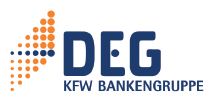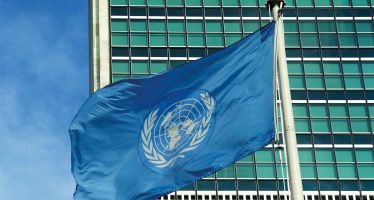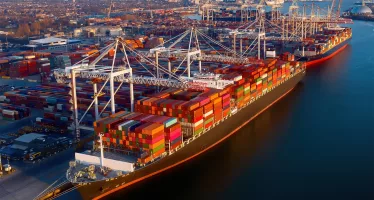DEG: Germany Eyes Future Markets Beyond the BRICS

Author: Alexander Klein
In the light of weak economic activity, growth forecasts for the major emerging nations in 2013 and 2014 are being revised downwards. The so-called BRICS states (Brazil, Russia, India, China and South Africa) – which constitute the key foreign markets for German companies – are particularly affected. Dynamic, second-in-line countries are now coming to the fore. Although these countries are not without their challenges, it is worth taking a glance at the opportunities they offer.
Instead of expecting that the BRICS states will continue to experience a never-ending boom, disillusion has now set in: In China, GDP and export figures are weaker than expected, and the risks from the real estate and financial sectors are being brought into focus to an even greater extent by unusually drastic measures from the Chinese central bank.
For a good few years, it has been generally acknowledged that China needs to change its growth model to make it more sustainable. Yet current developments highlight the fact that business-as-usual is not an option. In this respect, the recently announced measures to promote the economy differ to those of 2009. A considerably smaller package with fiscal incentives has been put together. Additionally, the minimum growth targets, previously 7.5%, have been lowered to 7%.
Many banks are moving in the same direction and are also revising their GDP growth forecasts downward. In this way, it is clear that China could maybe afford a further credit glut and economic stimulus package as in 2009, if needed, but it is no longer in a position to justify one in the light of the misallocation of funds, for instance, in the real estate sector.
“For a good few years, it has been generally acknowledged that China needs to change its growth model to make it more sustainable.”
The picture is not much rosier in the other BRICS countries. Growth is also hitting the limits of the catching up process. Negative side-effects – such as growing social inequality and damage to the environment – are increasingly taking centre stage. Necessary structural reforms and a rethinking of economic policy in India and Brazil, as well as oil dependency in Russia which urgently needs to be reduced, underline that the outlook for success in these countries cannot be taken as set in stone.
South Africa, once Africa’s economic role model, has also been recording lower growth rates since the start of the financial crisis in 2009. It is likely that unfavourable investment conditions – high unit labour costs, low growth in productivity, and higher political risks – will lead to the economy underperforming again in the coming year.
Beyond the BRICS there are, however, a number of countries with growth rates of over 5%, and which also show comparatively positive investment conditions, relatively good political stability and significant market size.
Just as in the largest emerging economies, the main potential in these countries lies within their demographic development. Today, around half of the world’s population already lives in cities, and it is assumed that by 2030, urban population growth will almost entirely take place in emerging and developing countries. In this respect, primarily populations in smaller cities – comprising a million inhabitants or more – will increase greatly. The necessary expansion of these cities offers a huge potential for the private sector, as does the growing middle class with its changing patterns of consumer behaviour. Examples of sectors with potential for accelerated growth are environmentally friendly transport solutions, water and sewage treatment, waste management, renewable energies and a wide range of service industries.
If the BRICS are removed from the equation, the emerging and developing countries have recorded economic growth of around 5% per year since 2009. Again, on average, almost 5% is forecast for the next four years. The investment framework conditions are often better than commonly assumed: In the Doing Business Index of the World Bank – an indicator of these framework conditions – countries such as Peru, Rwanda and Ghana are, in part, ranked well above the BRIC countries. Indonesia, Peru and East Africa in particular demonstrate market potential.
Indonesia’s GDP has grown by between five and six percent annually, over the past ten years. A process of opening up to the wider world, initiated after the Asia crisis in 1997, coupled to prudent economic policies, has furthered this development. The 2009 crisis proved the country’s economy to be comparatively robust. While the economy stagnated in other Asian countries, Indonesia’s managed to grow at a rate just 1.5 percentage points shy of pre-crisis levels.
Strong domestic demand is the main driver for growth in Indonesia. High import bills for fuel and machines, as well as weak export earnings due to a lower demand for raw materials that make up around half of exports, are nevertheless having a negative impact on the external trade balance. The country’s main export markets include the US, Japan and China.
The anticipated positive economic developments in the US, and the recovery taking root in both Japan and the Eurozone countries, should offset weak demand from China. Following a short-term negative impact on private consumption, a significant lowering of fuel subsidies should have a positive effect over the coming years. With this growth model, Indonesia seems less susceptible to exogenous demand shocks in the medium term than many other states, particularly in Asia. Accordingly, a growth rate of almost six percent is again forecast for the upcoming years.
Indonesia’s domestic and external trade potential, which businesses can harness by setting up local production sites, is particularly attractive to investors. With approx. 240m inhabitants, Indonesia is the fourth largest nation in the world. As a member of the Association of Southeast Asian Nations (ASEAN), it also has access to an increasingly integrated economic area comprising around 600m inhabitants. A rapidly rising middle class and an increasing number of bilateral free trade agreements round off the external and domestic trade potential of this economy.
Direct investments also reflect this. Despite challenging circumstances such as insufficient infrastructure, Indonesia was ranked fourth after China, the US and India in the UN World Investment Report’s most recent survey for 2013-2015. The report provides information on the most attractive locations for direct investment according to the largest multinational companies.
And yet the proportion of German direct investments is relatively low. While Chinese companies, for example, are especially active in the Indonesian infrastructure sector, German companies consider that country’s economy more trade-related and, even so, only on the periphery. From an Indonesian perspective, German products make up less than 2% of total imports. Japanese goods, on the other hand account for 12%. German exports include machinery and chemical products, as well as motor vehicles and automotive parts.
In South America, Peru is one of the fastest growing economies. GDP growth over the past ten years amounted to an average of about 6%. Peru benefits from its participation in bilateral and multilateral free trade agreements, in addition to prudent economy policies and continuous improvements to the investment climate, which is reflected in the country’s high ranking on the Doing Business Index.
Peru is a member of the Andean Community and an associate member of Mercosur. The country also signed a free trade agreement with the EU earlier this year. Private consumption and investments, particularly in the extractive industries, will probably continue to be the main drivers for growth over the coming years.
In contrast to weak growth in neighbouring Brazil, Peru’s GDP is set to increase between 5-6% annually in both 2013 and 2014. Direct investments have developed very positively over the past five to six years. Even in the 2009 crisis year, investment levels dipped only marginally. Due to a good outlook for the economy, direct investments are expected to continue rising. This is also a result of the country’s excellent location in the centre of the continent and its increasingly important role as a point of entry for trade and direct investment in the region.
However, from a German perspective, little attention has been paid to the Andean nation until now. German products account for less than 3% of Peru’s imports. As is the case with Indonesia, these imports are predominantly machinery and chemical products, as well as motor vehicles and automotive parts.
East Africa is another good example of a region that defies all the common prejudices which have shrouded Africa for years. The countries of Burundi, Rwanda, Uganda, Tanzania and Kenya belong to the East African Community (EAC). This community of states demonstrates significant economic potential with its 140 million inhabitants, a joint economic output of around $85 billion – in part high volumes of raw materials – and a continually growing integration of trade relations.
Alongside the raw materials sector, the areas of infrastructure and services seem to be particularly promising. But there are also positive developments in the manufacturing sector. And still, only approx. 0.1% of German exports are destined for East African countries, and German direct investment is almost negligible.
In view of only moderate economic growth in the largest emerging economies, it appears to make sense for German companies to expand their overseas activities with the inclusion of additional investment and export destinations. The countries mentioned here are examples of places where successful activities could be carried out – when supported by experienced partners.

About DEG
DEG – Deutsche Investitions- und Entwicklungsgesellschaft mbH – is an experienced financing partner for investments in future markets and an organisation which has accompanied companies in these countries for over fifty years. As such, DEG is thoroughly familiar with their political, cultural and legal backgrounds.
About the Author
Mr Alexander Klein is the senior macro economist in the Corporate Strategy and Development Policy Department at DEG – Deutsche Investitions- und Entwicklungsgesellschaft mbH.
You may have an interest in also reading…
UNCDF and Convergence: Getting the Right Blend in Game-Changing Finance
In December of 2015, the global news website, Quartz, published a piece entitled “Both Venture Capitalists and Banks are Betting
Replacing Aid with Trade
Modern India, boasting its own space programme spends 70 billion pounds annually in fighting poverty and no longer needs British
Trade: Engine Room of the United Kingdom
‘While economic issues might not be centre stage by many, there is a real need for there to be a



















































































